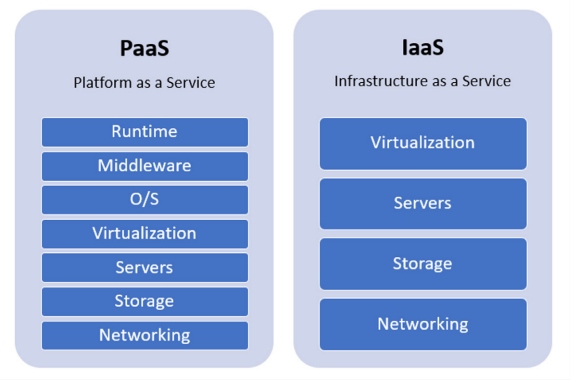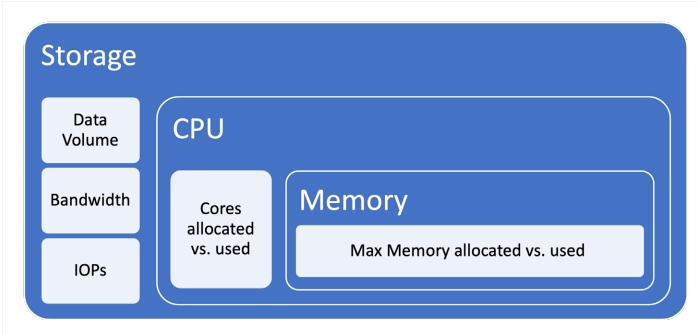Should You Move to the Cloud?
In this article, let’s walk through what questions you should ask before your company embarks on a cloud migration.
Join the DZone community and get the full member experience.
Join For FreeThis is an article from DZone's 2022 Database Systems Trend Report.
For more:
Read the Report
Companies are moving to the cloud at lightning speed nowadays, but many who make the leap are facing challenges and wish they had asked these essential questions first. Not having discussions around these key issues before moving to the cloud can lead to costly outcomes. Let’s walk through what questions you should ask before your company embarks on a cloud migration.
What’s the Best Service Cloud Option to Fit Your Environment?
First and foremost, you need to discover what options are available and best fit your environment — you shouldn’t necessarily just look to rebuild your on-premises environment in the cloud. Do you know the difference between cloud service models such as PaaS and IaaS?
PaaS (Platform as a Service) is essentially having the cloud provider host and manage both the infrastructure and database components. PaaS services vary, but in nearly all cases, backups, high availability, and patching are taken care of by the cloud vendor. In some cases, your service may auto scale with the workload.
IaaS (Infrastructure as a Service) gives you networking, storage, and VMs. In IaaS, your VMs will be maintained fully by your internal staff, however, there are add-ons that can automate services like backups and even patching in some cases. You can compare this to using a hosting provider who provides the hardware, and you install, configure, and maintain anything housed on that VM.

Figure 1: PaaS vs. IaaS
The next question is, have you mapped out your current environment, and do you have an understanding of what the resource requirements are? You need to get a baseline and gather metrics, like how much memory is being consumed versus what is allocated, and what your storage requirements are. Storage requirements go far beyond just data volume, which is normally what is thought of when referring to storage, but you need to take it a step further and dig into bandwidth and IOPs utilized by various workloads (as seen in Figure 2). How many CPUs are currently allocated versus needed?
All of these metrics should be considered as you look at what platform options, pricing tiers, and sizing will fit your cloud environment. You’ll learn more on this later.

Figure 2: Key metrics to consider
Lastly, when looking at the best cloud option to fit your environment, ask who manages your current databases, infrastructure, and network, and ask how moving to the cloud will change that. When choosing between cloud service options, the role of your current staff needs to be considered since each option changes the role of your team.
If you are choosing a PaaS option, you no longer rely on an internal infrastructure staff to maintain and build the infrastructure, which can be a huge productivity savings. Along with that, your DBA’s role slightly changes as well. DBAs are still needed to tune performance, validate, and manage the data, but this will allow their focus to shift from maintenance to improvement. This leads us to our next big question.
Does My In-House Team Have the Skills to Support Moving to the Cloud?
Cloud migrations have a lot of planning and moving parts in both design and execution. It’s important to make sure you have the skills and support staff to take on a migration and ensure its success from start to finish. The first series of questions to ask are as follows:
- What are the cloud skills available within your current staff?
- Have any of your staff ever performed a migration to the cloud?
- Is it advantageous to get your staff trained and certified before embarking on your migration journey?
- All cloud providers offer training certification programs and exams to help ready their skill sets.
There is nothing more costly both in time and money than a partial migration that has to switch resources mid-stream due to errors, missed steps, and bad decisions based on poor planning or missing in-house skills. This cost means it is important to ask if you should outsource the project. It’s very possible that the best plan is to augment your staff by bringing in consultants to assist with the project. Or even more, for the success of your project, it could be better to outsource the full migration to a consultancy that has both the skills and broad experience across a number of migrations.
Is Moving to the Cloud Financially Advantageous?
There is nothing worse than sticker shock after a successful cloud migration. Choosing the cloud option with the right environment and right sizing is essential to avoid sticker shock, which is why we start with this question first: which cloud option is our best fit? Moving to the cloud provides scalability, security, and flexibility, but all that comes with a price. If you don’t choose the proper scaling or tier, costs can multiply exponentially and, in some cases, end up higher in the cloud versus staying in your current on-premises environments.
The next important question to ask is whether moving to the cloud is financially advantageous. Each cloud provider offers great tools to allow you to estimate your monthly spend. As part of your migration planning, it’s vital to take the time to analyze the metrics you have gathered against each pricing tier option that meet those needs. By doing so, you can see what an estimated monthly cost might be. It is important to monitor those costs to ensure that your budget expectation is in line with your actual spend.
What can you do to lower costs? Have you evaluated all the cost options available within your chosen cloud provider? Cloud providers understand that pricing is a huge concern when moving to the cloud, so many providers have introduced options to help minimize that. By far, the largest cost savings come from purchasing resource reservations instead of operating on a monthly basis, which introduces costs savings based on term agreements. When you make a reservation, you can reduce costs up to 72 percent — and you still have flexibility to move reservations around different resources. You can also pay either monthly or upfront, depending on your financial situation.
Another option is to take advantage of flexible resources. Normally, most PaaS resources are provisioned to a specific compute tier that provides dedicated resources with fixed costs billed on an hourly rate. This is great when your resource has consistent usage patterns. But what if your usage fluctuates? What if you could save money when usage is lower?
That’s where flexible resources come in — these are especially good for dev/test workloads where usage may be limited. Not all cloud resources have flexible offerings, but when it is offered, it is another good way to reduce the costs of your cloud migration. It can also be a great way to save by taking advantage of the auto-scaling feature that comes with it, especially for a new workload where you may not understand the workload profile. It is important to note that in some cases, the per-hour costs of these flexible resources are more than a fully allocated service — this means you are only saving money if those resources are idle. Taking the time to question costs and research cost-saving options should be part of the questions answered prior to migrating.
Summary
As you can see, migrating to the cloud is more than just a procedural process; there are many questions to be asked before taking the first step in the journey. It’s important to consider and question all things that will govern the migration process, in-house skills, cost, and resource needs. Have you asked and answered all the questions posed? If not, it’s time to take a step back and get some answers.
This is an article from DZone's 2022 Database Systems Trend Report.
For more:
Read the Report
Opinions expressed by DZone contributors are their own.

Comments